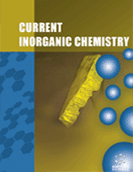Abstract
Background: Spin crossover (SC) compounds are among the most fascinating molecular solids exhibiting thermal and photo-switching. The spin crossover phenomenon manifests, generally, in iron (II) complexes in octahedral symmetry, surrounded by nitrogen atoms. The splitting of the energy of the d orbitals into the t2g (ground state) and eg (excited state) allows the existence of two possible electronic states, namely high-spin (HS, S=2) and low-spin (LS, S=0) for weak and strong ligand-field configurations, respectively. At the solid state, the switching between these two electronic states is possible with temperature, light, pressure, etc. and may lead to gradual or first-order transitions, accompanied with a thermal hysteresis loop. In addition, SC materials exhibit interesting non-equilibrium phenomena, like photo-induced metastable states at low-temperature and their non-linear thermally-induced relaxation, which will be investigated in the current work. Methods: Optical microscopy technique is used here to visualize the first-order thermal spin transition in the single crystal [{Fe(NCSe)(py)2}2 (m-bpypz)], where py = pyridine and bpypz= 3,5-bis(2-pyridyl)-pyrazolate, hereafter abbreviated Fe(NCSe). The experimental set-up was also adapted to include a photo-excitation through the objective of the microscope. We then succeeded in imaging, the spatiotemporal transformation of the SC single crystal under light at very low temperature, ~20K. Image processing allowed to furnish quantitative data on this transformation. Results: This report focusses on the first direct visualization by optical microscopy of the photo-transformation of the SC single crystal under light. The phenomenon behind this process, called LIESST effect (Light-induced Excited Spin State Trapping) is well known in the SC topic, and was studied in the past using magnetic and optical absorption techniques, but not yet visualized. Our results show that the transformation from LS to HS under light proceeds in a homogeneous way, without any presence of domain coarsening (at the resolution of the optical microscopy, ~500 nm), in good agreement with the general admitted idea that the LIESST effect is a non-cooperative process. We have also followed the spatiotemporal transformation (at higher temperature, T~60K) of the crystal during its thermal relaxation from the photo-induced metastable HS state to the stable LS state. We could derive the time dependence of the HS fraction which was found to follow the usual sigmoidal shape, in excellent agreement with previous magnetic data, thus confirming the cooperative character of this relaxation. As for the photo-excitation, our data demonstrated that the relaxation process from HS to LS proceeds without any domain formation: the crystal remains in the homogeneous state during the overall relaxation process. From the theoretical view point, the photoexcitation and the relaxation processes are described by the kinetic mean field model whose all parameters were derived from the experiment. Conclusion: We presented optical microscopy studies on the single crystal Fe(NCSe) which included the visualization of the first-order thermal transition and also the photo-excitation and the relaxation of one single crystal Fe(NCSe) under light. The thermal equilibrium transition, that is the first-order transition observed at ~112K, proceeds via the formation of a single domain which propagates overall the crystal. In contrast, the photoexcitation process and the subsequent thermal relaxation of the photo-induced HS state, did not show any domain formation. These two last processes take place through homogenous transformations of the crystal. The analysis of our optical microscopy data of photoexcitation/relaxation, in the frame of a kinetic mean-field description, allowed to derive all thermodynamic parameters of the model, such as the interaction parameter and the effective energy barriers. The current observations underline the role of the lattice dynamics and its crucial temperature dependence, in the conditions of occurrence of domains formation. In general, the existence of macroscopic domains requires the presence of an instability.
Keywords: Mean-field kinetics, optical microscopy, photo-excitation, relaxation, spin-crossover, visualization.
Graphical Abstract
 18
18

